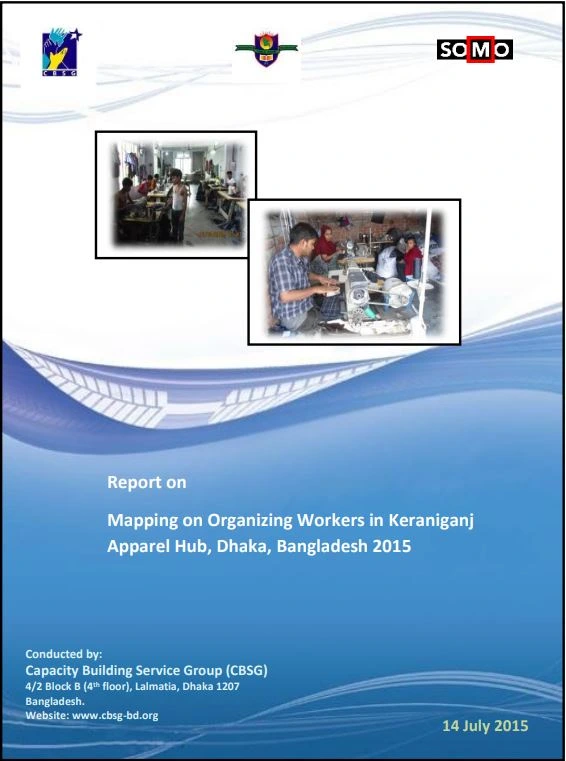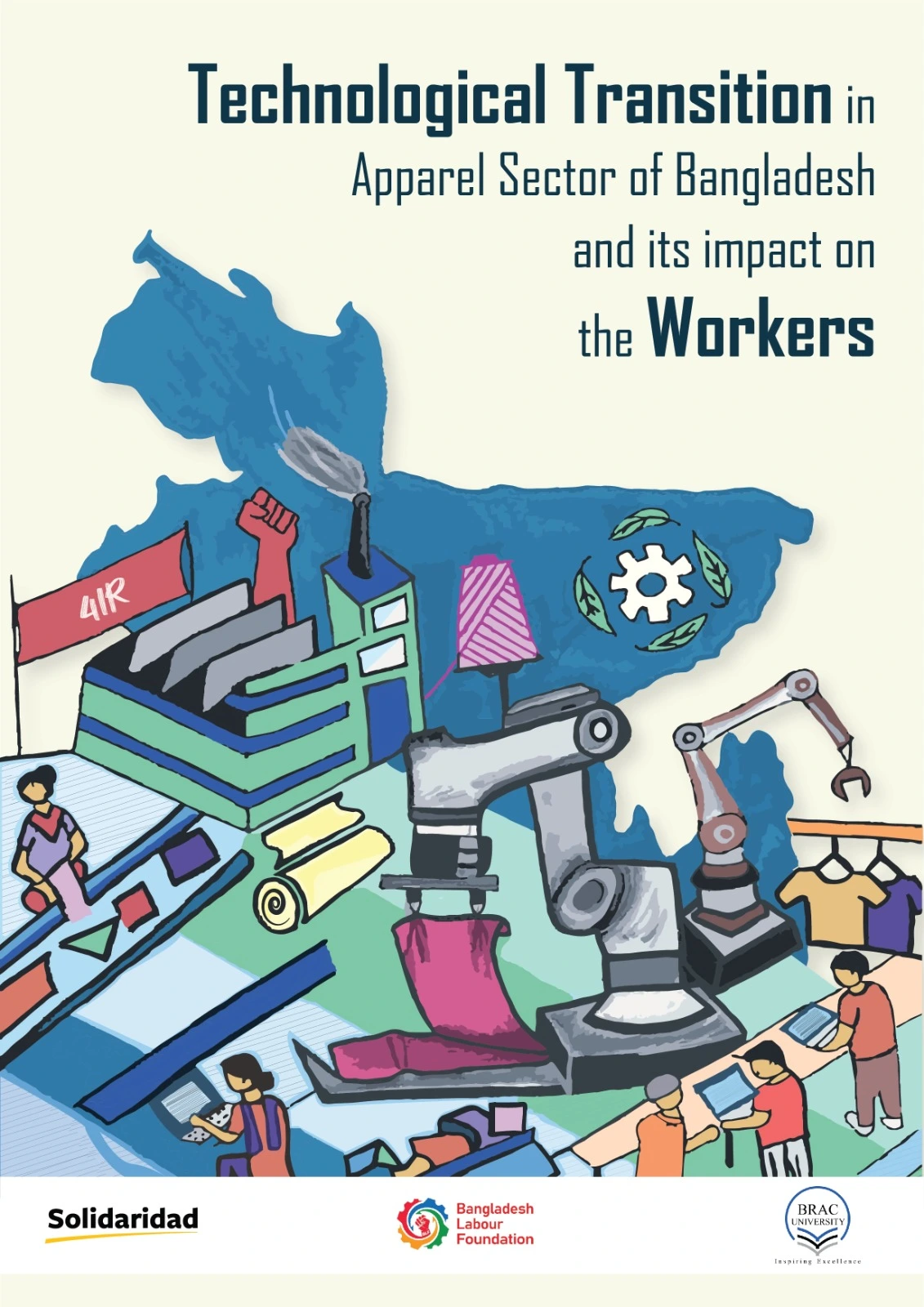This research focuses on working conditions in the Keraniganj garment workshops. In addition, the characteristics of the Keraniganj-based garment industry were studied, including: size of the workshops, products produced and supplier-buyer linkages. This report is written by CBSG, with input from SOMO.
Research & Study
Report: Mapping on Organizing Workers in Keraniganj Apparel Hub, Dhaka, Bangladesh 2015
July, 2015
This research focuses on working conditions in the Keraniganj garment workshops. In addition, the characteristics of the Keraniganj-based garment industry were studied, including: size of the workshops, products produced and supplier-buyer linkages. This report is written by CBSG, with input from SOMO.
Background
Bangladesh is well known across the world for the burgeoning apparel industry, which is growing exponentially triggered by the demand from international buyers including Walmart, H&M, JC Penny. What it not very known to the most that a parallel industry has grown over time to meet the ever-increasing home grown demand for various apparels including jeans, T[1]Shirts and other types of clothing. These industries are called local garments as they mainly meet local demand. This industry has developed by local entrepreneurs with small capital and no access to bank credit using locally available raw materials and leftovers from export oriented garment industries just other side of Dhaka City divided by the river Buriganga in a place called Keranigang. Over the last three decades, Keranigong local garment becomes an important element in national supply chain.
The Bangladesh Labour Foundation (BLF), supported by FNV Mondiaal, seeks to support worker organising in the Keraniganj-based garment industry. Trade union presence and membership is very low in Keraniganj. There is a complete lack of information about the industry and the conditions under which workers work and live. In order to develop strategies to support unions and organise workers such information is indispensable. Therefore, BLF and FNV Mondiaal commissioned CBSG and SOMO to carry out a mapping of the garment industry in Keraniganj.
Objectives
- Concentration of apparel factories within Keraniganj.
- Workforce in the Keraniganj apparel hub and their sex ratio.
- Extent of unionization in the study area.
- Characteristics of Keraniganj apparel workers.
- Situation of workers: both union and non-union members.
Key Findings
- The Keraniganj apparel industry has grown haphazardly with little to no government oversight. The majority of factories operate informally, without legal registration, industrial safety measures, or compliance with labor laws.
- Workers face harsh conditions, including long working hours (often exceeding 12 hours per day), lack of proper ventilation, inadequate toilet facilities, and insufficient safety measures.Most factories lack fire safety precautions, emergency exits, and first aid support.
- Approximately 59% of the workforce is under 18 years old, with 9.75% being below the age of 14, highlighting a significant child labor issue. These young workers often lack access to education and are employed under exploitative conditions.
- Most workers are paid on a piece-rate basis, with 81% receiving wages based on production output, leading to unstable earnings. The average wage for male workers is BDT 9,793, while female workers earn significantly less (BDT 7,012) due to fewer working hours and wage discrimination.
- More than 97% of workers are unaware of trade unions, and existing unions cover only a small fraction of the workforce (around 2,912 members in total). Due to owner resistance, political influence, and worker fear of retaliation, unionization efforts have been minimal and largely ineffective.
Recommendations
- BLF should conduct awareness session with owners, senior workers and parents of the child workers. These sessions should include regulatory rules such as child workers’ age limits and their working hours and identifying hazardous jobs etc.
- BLF can design cluster-wise awareness and organizing activity. It now has deployed two organizing staff, who can be given cluster specific responsibility – which can easily be monitored.
- BFL now can conduct policy advocacy to bring attention of policy level people of the Government towards recognizing the Hub as a formal industry. This will enable government line departments to enforce regulatory framework and facilitate a lawful environment for the owners and workers.
- BLF should bring these issues to the attention of both public and private sector service providers. It can organize round tables, seminars and appraise national and international organizations including ILO and international labour support organizations, so that they can come forward and assist in their respective areas.
- BLF can facilitate a re-organisation process and make cluster specific sub – committees to bring dynamism in workers organizing effort.
The study reveals the scenario of apparel sector in Keraniganj besides it also covers the workers’ situation and the present status of the worker’s union. Analysing the findings of the study there are some recommendations suggested regarding unionization, policy advocacy for formal recognition, ensuring regulatory framework for governance, child labour, health and occupational safety, workers’ continuing education, awareness raising on workers’ right, occupational health and hygiene, legal safety net issues for Government policy makers, Bangladesh Labour Welfare Foundation (BLF), Business Associations and local worker unions.

Publication Details
Date: July, 2015
Contact
Bangladesh Labour Foundation (BLF)
107 Bir Uttam C.R. Datta Road
Dhaka – 1205
Bangladesh






